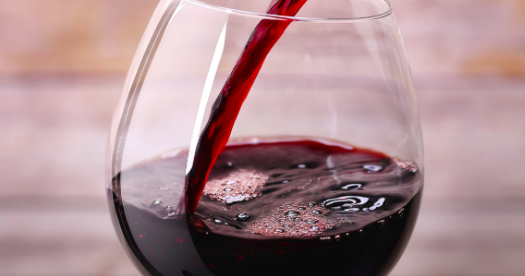When It Pays to Drink on the Job

Whether you’re celebrating a colleague’s upcoming wedding, toasting to their professional achievement, or wishing them well as they explore new opportunities, there are plenty of reasons to throw an office party. In general, these moments aren’t the most productive uses of our professional time; while we are at work, we’re not actually doing work.
That was probably the case in 2011 when physicists at Japan’s National Institute for Materials Science were attending a party for a colleague. While the reason for the festivities has gone unreported, we know what drinks were served. There was probably water and, say, Diet Coke for the teetotallers, but for those wanting to indulge, the list was extensive. There was sake, beer, wine shochu, and more. There was so much, they couldn’t drink it all.
Normally, the leftover booze would go to waste — there’s often no good place in an office to store the remainders of a mostly-drunken bottle of red wine. But in this case, according to Engadget, the researchers decided to continue their fun, in a sciencey sort of way.
When not partying, the researchers were testing the superconductivity of a compound known as FeTe0.8S0.2, which is a mix of iron, tellurium, and tellurium sulfide. Alone, the compound isn’t all that special, but when soaked overnight an ethanol/water mixture and then cooled, the compound begins to act like a superconductor but at very low levels. The research team hoped to find ways to make FeTe0.8S0.2 a better superconductor, so they moved past the ethanol-based solution and onto other liquids. And with the party over, they happened to have a lot of leftovers on hand — so they tried those, too. Each of the drink choices was heated to 70 degrees Celcius (158 degrees Fahrenheit) and then, the compound soaked in the warm bath of alcohol for about a day. They didn’t expect much if any improvement.
They were wrong. Tech blog io9 reports:
When they tested the resulting materials for superconductivity, they found that the ones soaked in commercial booze came out ahead. About 15 percent of the material became a superconductor for the water mixed with ethanol, and less for the pure water. By comparison, Shochu jacked up conductivity by 23 percent and red wine managed to supercharge over 62 percent of the material. The scientists were pleased, if bemused with their results.
Surprised, the team tried to explain why this happened. The best reason they could come up with as for why
red wine was the winner, according to Popular Science, is that “samples with a higher concentration of tartaric acid [which is most commonly found in grapes] had a higher superconducting capability,” but the team cautioned that other data suggests that may not quite be right. That also led lead researcher Yoshihiko Takano to give an alternative explanation to Phys.org: “the better it tastes, the more effective it is.” And while he notes that taste is subjective, he may not be joking; he also noted that “there may be a connection between the substance we humans sense as a taste and the substance that induces superconductivity.”
But either way, hopefully, Takano and team will throw more parties. Who knows what else they’ll discover?
Bonus fact: If you’re buying expensive wine, you’re very possibly not buying higher quality wine, but rather, you’re investing in extra glass. In 2012, the Guardian reported that “a survey of 150 people found that consumers believe heavier bottles are more expensive and contain higher-quality wine,” despite the fact that the same amount of wine was in each bottle. While, per on professor cited, “it may have been [historically] that the more expensive wines were in heavier bottles to prevent breakage,” that’s probably not the case today. Bottle heft is most likely a marketing trick.
From the Archives: Winning the Wine Lottery: The majesty of Two Buck Chuck.
